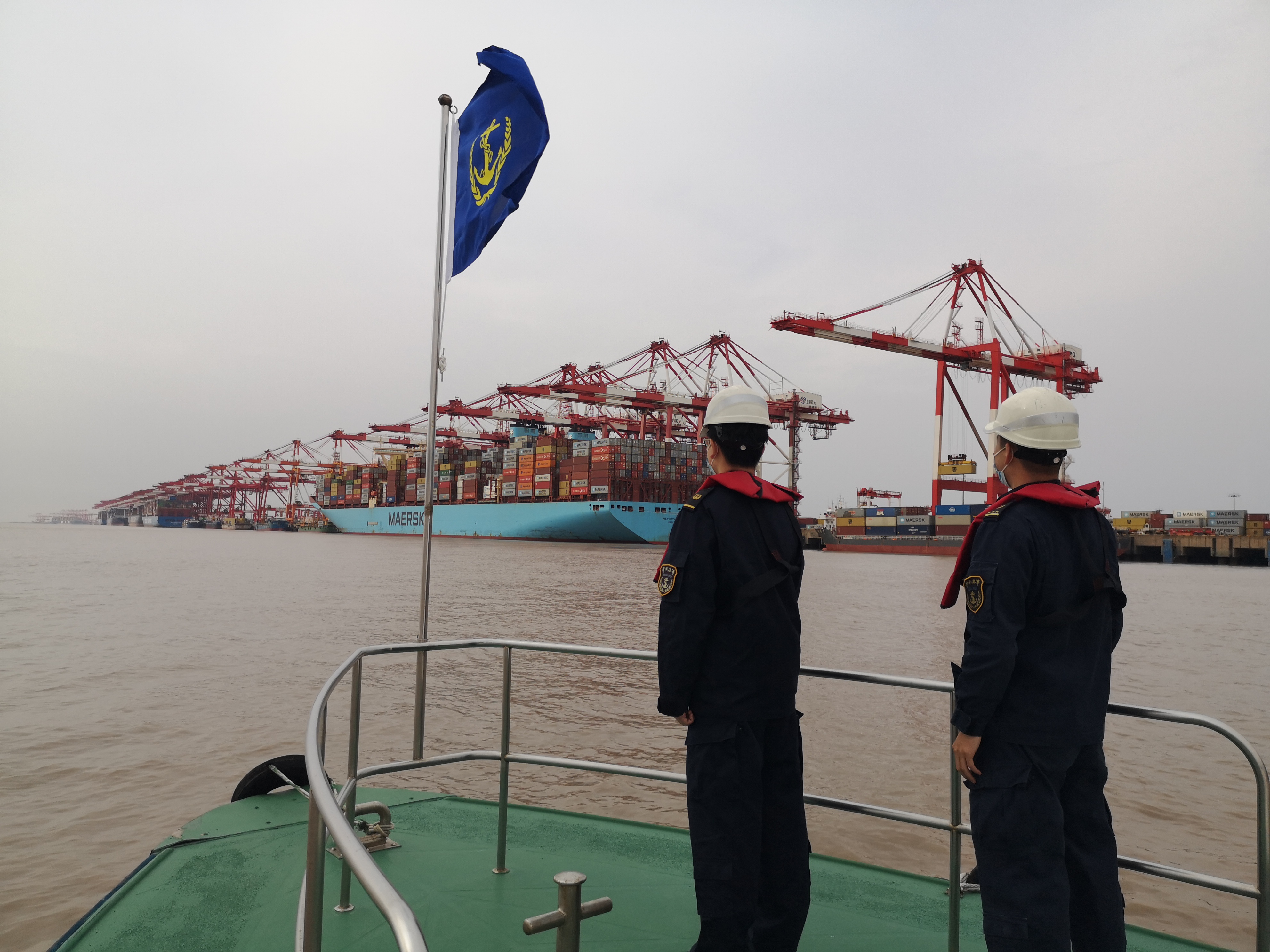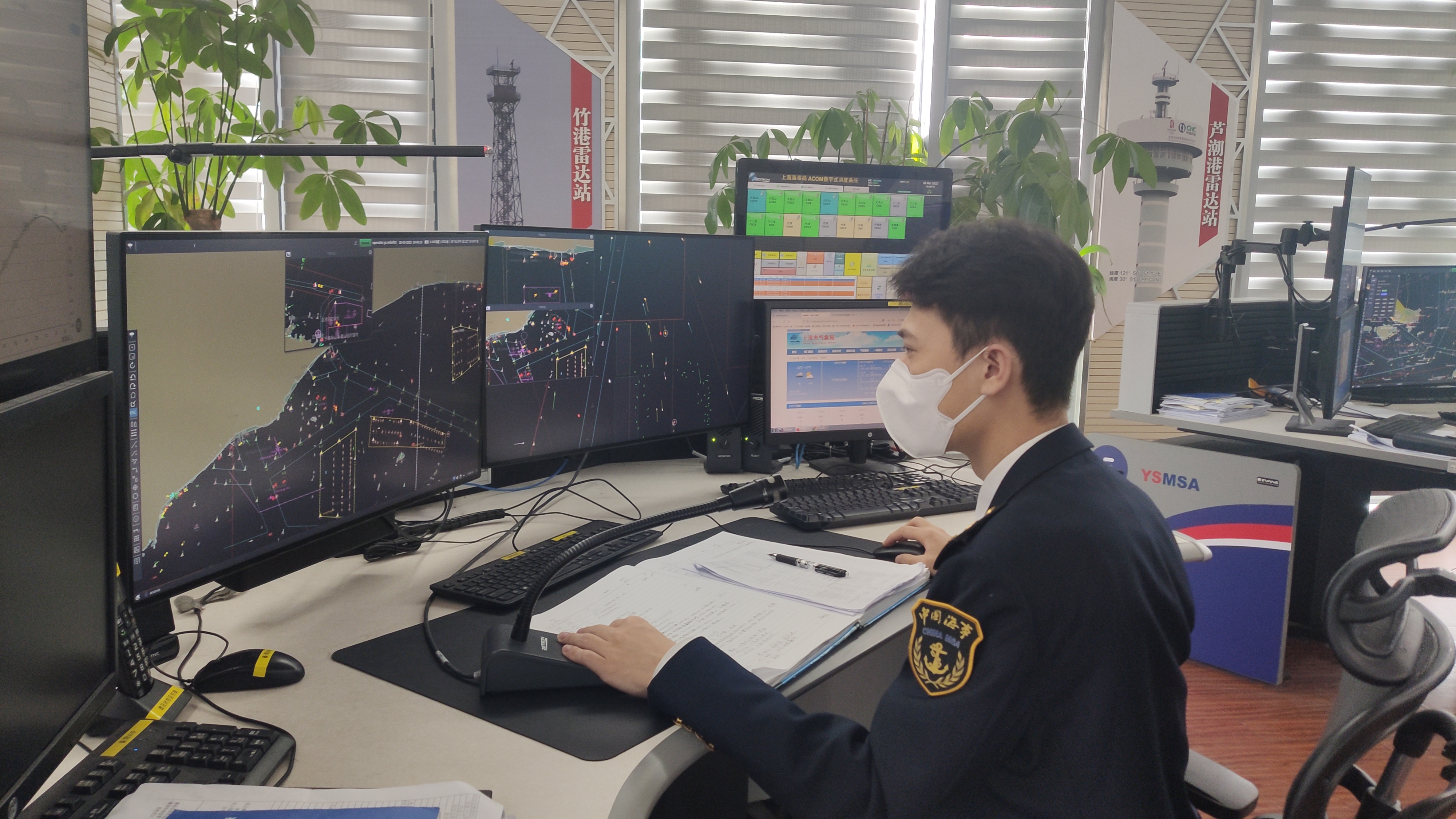 From March 28, within Shanghai A new round of diced and gridded nucleic acid screening was carried out. In order to ensure the safety and order of ocean transportation at Yangshan Port, the Yangshan Port Maritime Safety Administration dispatched additional staff on duty to station at the workplace last night to meet the needs of the 24-hour work system. On the 28th, a total of 27 container ships on international voyages were safely entered and exited, and the safety of internal feeder ships was ensured. 39 ships entered and exited, and the number of ships and the order of navigation remained in normal operation.
From March 28, within Shanghai A new round of diced and gridded nucleic acid screening was carried out. In order to ensure the safety and order of ocean transportation at Yangshan Port, the Yangshan Port Maritime Safety Administration dispatched additional staff on duty to station at the workplace last night to meet the needs of the 24-hour work system. On the 28th, a total of 27 container ships on international voyages were safely entered and exited, and the safety of internal feeder ships was ensured. 39 ships entered and exited, and the number of ships and the order of navigation remained in normal operation.
If the operation of the ship traffic management center, government affairs center, patrol boats, etc. is affected, it will lead to the normal entry and exit of ships such as international shipping containers, internal feeder containers, and energy and material transportation ships. port. At 1:00 on the 28th, all the staff of the Yangshan Port Maritime Safety Administration were all in place to ensure that the epidemic prevention and control and the work of the Maritime Center were not chaotic, and the water traffic was safe and orderly.  Yangshan Port Maritime Safety Administration statistics show that 3 Since the beginning of this month, the average daily number of international trunk line container ships entering and leaving Yangshan Deepwater Port is about 24, and the daily average of domestic feeder container ships is about 36, which has not been affected by this round of domestic epidemic.
Yangshan Port Maritime Safety Administration statistics show that 3 Since the beginning of this month, the average daily number of international trunk line container ships entering and leaving Yangshan Deepwater Port is about 24, and the daily average of domestic feeder container ships is about 36, which has not been affected by this round of domestic epidemic.  In order to ensure the smooth flow of international logistics supply chain, Yangshan Through remote non-contact methods such as the ship traffic management system and online government affairs services, the Port and Maritime Safety Administration ensures the safety of ships’ navigation, the smooth handling of government affairs, and the priority passage of ships carrying important civilian materials. On the 29th, the Yangshan Port Maritime Safety Administration will ensure the entry of the large LNG ship “Shenhai” into the port, which can provide Shanghai with 140,000 cubic meters of liquefied natural gas to ensure sufficient energy supply.
In order to ensure the smooth flow of international logistics supply chain, Yangshan Through remote non-contact methods such as the ship traffic management system and online government affairs services, the Port and Maritime Safety Administration ensures the safety of ships’ navigation, the smooth handling of government affairs, and the priority passage of ships carrying important civilian materials. On the 29th, the Yangshan Port Maritime Safety Administration will ensure the entry of the large LNG ship “Shenhai” into the port, which can provide Shanghai with 140,000 cubic meters of liquefied natural gas to ensure sufficient energy supply.